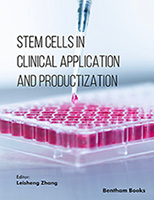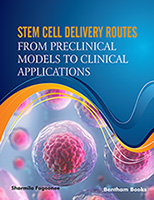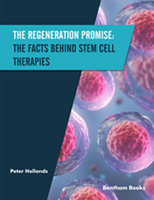Preface
Research in the rapidly emerging field of stem cells is playing a pivotal role in regenerative medicine. The first 3 chapters of this volume deal with mesenchymal stem cell research. In chapter 1, Wei Seong Toh presents the emerging role of mesenchymal stem cell (MSC) secretome as a new paradigm in treating cartilage regeneration. The study of MSC secretome allows a better mechanistic understanding of the role of MSCs in tissue repair and disease treatment.
Mauricio et al. describe a promising strategy for the optimization of hybrid systems through the association of biomaterials to dental pulp stem cells, in chapter 2. Dental pulp stem cells can be easily isolated from deciduous and definitive teeth. In chapter 3, Kan et al. describe the recent progress and the opportunities as well as challenges in MSC research.
Arteta et al., in chapter 4, discuss current studies that underline the importance of liver progenitor cells (LPCs) for constructing bioartificial livers and as the source of cells for transplantation.
In the next chapter, Ward et al. present new exciting developments in cardiogenesis from bench-to-bedside. They review the heart development in different organisms, supplemented with insights from stem cell biology and clinical studies, which will throw light on the development of effective stem cell treatments for myocardial infarction and other cardiac diseases. Yue et al., in their chapter 6, present an overview of different Ca2+ signalling events in the differentiation of embryonic stem cells into cardiomyocytes.
The last two chapters deal with neurodegenerative diseases. Zareen Amtul, in Chapter 7, highlights the regenerative cell-based therapies that can be used to combat neurodegenerative disorders. In the last chapter, García-Montes and Drucker-Colín discuss in detail about the central role of stem cell transplantation to cure Parkinson´s Disease. They discuss the current challenges in optimizing stem cell therapy for the treatment of Parkinson’s disease.
We hope that the readers will enjoy the comprehensive reviews on new developments in stem cell and regenerative medicine research. We wish to thank the editorial staff of Bentham Science Publishers, particularly Dr. Faryal Sami, Mr. Shehzad Naqvi and Mr. Mahmood Alam for their constant help and support.
Prof. Atta-ur-Rahman, FRS
Honorary Life Fellow
Kings College
University of Cambridge
Cambridge
UK
&
Dr. Shazia Anjum
Department of Chemistry
Cholistan Institute of Desert Studies
The Islamia University of Bahawalpur
Pakistan





